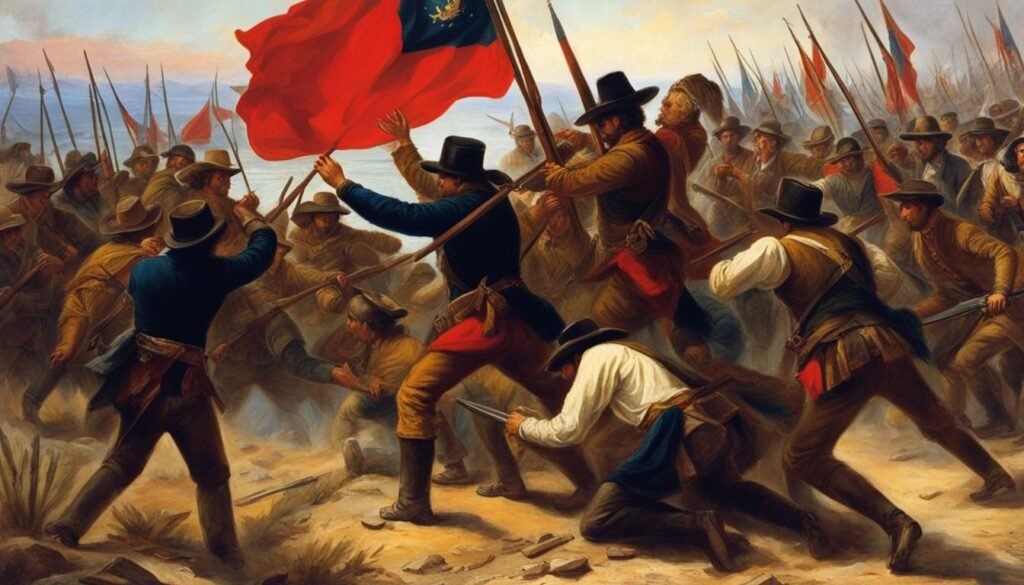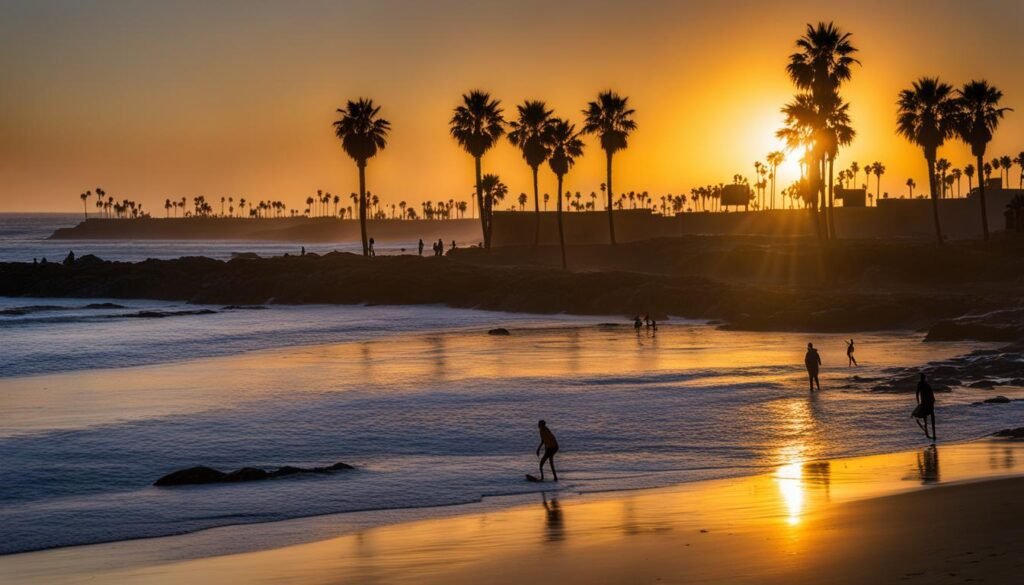Hi there! Today, I want to take you on a journey back to the year 1846, when a group of American settlers in California ignited a rebellion that came to be known as the Bear Flag Revolt. This uprising marked a pivotal moment in California’s history, shaping its path to statehood and leaving a lasting legacy that is still celebrated today.
The Bear Flag Revolt took place against the backdrop of tension between American settlers and the Mexican government. In 1846, California was under Mexican rule, but the growing population of American settlers raised concerns among Mexican leaders, who worried about the settlers’ loyalty and their potential pursuit of annexation to the United States. At the same time, rumors of an impending war between the United States and Mexico heightened fears among the American settlers, creating a powder keg of unrest.
The Bear Flag Revolt was led, in part, by the renowned American army officer and explorer, John C. Frémont. His arrival at Sutter’s Fort in the spring of 1846 set the stage for the rebellion. Although officially there to conduct a scientific survey, Frémont secretly encouraged American settlers to form militias and prepare for a rebellion against Mexico. While he didn’t directly participate in the initial attack on Sonoma, Frémont assumed command of the Bear Flaggers after their early successes.
From June to July 1846, the Bear Flag Revolt unfolded with the capture of the Mexican outpost of Sonoma by American settlers, led by William Ide and Ezekiel Merritt. They proclaimed California as an independent republic, hoisting a flag bearing the image of a grizzly bear, a red star, and the words “California Republic.” This act of rebellion led to a series of minor skirmishes with Mexican forces, eventually resulting in the American occupation of California and the end of the brief Bear Flag Republic.
The Bear Flag Revolt had a profound impact on the region. It showcased the strong desire for independence among American settlers and played a significant role in California’s journey toward statehood. In fact, the Bear Flag itself became an enduring emblem, eventually adopted as the official state flag in 1911.
Today, when we see the iconic bear on the California state flag, we are reminded of the bravery and determination of those American settlers who played a part in the Bear Flag Revolt. Their rebellion planted the seeds for California’s future as an integral part of the United States and holds a special place in both California’s history and the wider tapestry of American history.
Key Takeaways
- The Bear Flag Revolt was a 1846 rebellion by American settlers in California against Mexican rule.
- Led by American army officer John C. Frémont, the revolt resulted in the proclamation of California as an independent republic.
- The Bear Flag, featuring a grizzly bear, a red star, and the words “California Republic,” became the official state flag in 1911.
- The revolt played a significant role in California’s path to statehood and remains a pivotal event in American history.
- The Bear Flag Revolt symbolizes the strong desire for self-determination among American settlers in California.
Background of the Bear Flag Revolt
The political situation leading up to the Bear Flag Revolt in California was marked by tension between the American settlers and the Mexican government. California, under Mexican control, experienced a significant influx of American settlers who sought opportunities in the region. However, Mexican leaders were apprehensive about their loyalty and feared their desire for annexation to the United States.
The American settlers, on the other hand, distrusted their Mexican leaders and believed that their rights and interests were not adequately protected. Rumors of an impending war between the United States and Mexico further heightened anxieties, with many Americans fearing a preemptive attack from the Mexicans.
Role of John C. Frémont in the Bear Flag Revolt
American army officer and explorer John C. Frémont played a crucial role in the Bear Flag Revolt. In the spring of 1846, Frémont arrived at Sutter’s Fort with a small group of soldiers. Although his official mission was to conduct a scientific survey, Frémont began encouraging American settlers to form militias and prepare for a rebellion against Mexico. While Frémont did not directly participate in the initial attack on Sonoma, he provided tacit approval and later took command of the Bear Flaggers after their initial victories.
To understand Frémont’s involvement in the Bear Flag Revolt, it is important to delve into his background as an accomplished American army officer and explorer. Born in 1813, Frémont gained fame through his exploratory expeditions in the western territories of the United States. His reputation as an intrepid explorer earned him the nickname “The Pathfinder.”
Frémont’s arrival at Sutter’s Fort in the spring of 1846 marked a turning point in the revolt. While his initial mission was to conduct a scientific survey of the region, Frémont quickly recognized the simmering tension between American settlers and Mexican authorities. Sensing an opportunity for rebellion, Frémont actively encouraged settlers to form militias and prepare for a fight.
Although he did not personally participate in the initial attack on Sonoma, Frémont’s support was instrumental in the success of the revolt. His presence and encouragement played a vital role in rallying the American settlers and uniting them against the Mexican government.
After the Bear Flaggers achieved their initial victories, Frémont formally took command of their forces. Under his leadership, the rebellion grew in strength and legitimacy. Frémont’s strategic guidance and military expertise contributed significantly to the Bear Flaggers’ success in maintaining their control over the region.
Frémont’s contributions during the Bear Flag Revolt solidified his position as a key figure in California’s fight for independence. His involvement paved the way for the subsequent American occupation of California and eventually led to the state’s admission into the United States.


The Bear Flag Revolt: June-July 1846
The Bear Flag Revolt, a significant event in California’s history, took place from June to July 1846. It was a rebellion led by American settlers against Mexican rule in California, marking a crucial moment in the state’s journey towards achieving independence and eventual statehood.
During the revolt, American settlers, under the leadership of William Ide and Ezekiel Merritt, successfully captured the Mexican outpost of Sonoma. This daring action resulted in the declaration of California as an independent republic known as the California Republic. The rebels, inspired by their newfound freedom, designed a flag that featured a crude drawing of a grizzly bear, a red star, and the words “California Republic” as a symbol of their aspirations.
The revolt encountered a few minor skirmishes with Mexican forces, but it was largely a bloodless victory for the American settlers. The capture of Sonoma and the subsequent American occupation of California laid the groundwork for the independence movement that would eventually lead to California’s statehood.
The California Republic quietly faded away, but its impact on the region’s history was profound. The revolt served as an assertion of American settlers’ determination to break free from Mexican rule and played a crucial role in shaping California’s identity as a state. The grizzly bear flag, boldly displaying the spirit of independence, remains an enduring symbol of California’s heritage and is proudly recognized as the official state flag.
This image illustrates the Bear Flag that was raised during the revolt, embodying the rebellious spirit of the American settlers and their fight for independence.
Mexican Rule and Resistance in California
During the period of Mexican rule in California, tensions between the Mexican government and American settlers reached a boiling point. Many American settlers had obtained land grants from the Mexican authorities, but the legality of their claims came into question.
In 1846, Mexican Governor Jose Castro issued an edict nullifying land purchases by foreigners who were not naturalized as Mexicans. This proclamation cast doubt on the settlers’ claims and raised concerns among them about Mexican aggression.
Rumors circulated among the American settlers that Native Americans were being encouraged by the Mexican authorities to burn their crops, further fueling the tension.
These issues contributed to the growing resistance against Mexican rule in California. American settlers began questioning the legitimacy of the Mexican-controlled California and felt compelled to take action to protect their interests.
The resistance against Mexican rule ultimately led to the Bear Flag Revolt, a rebellion against the Mexican government by American settlers in California.
Through their acts of resistance, the American settlers sought to affirm their rights and establish their own governance in the region.
The Mexican rule and the subsequent resistance marked a significant chapter in the history of California, shaping its destiny and laying the groundwork for its eventual statehood.
The Fall of the Bear Flag Republic
The Bear Flag Republic, established during the Bear Flag Revolt, did not last long. In July 1846, American forces under Commodore John D. Sloat occupied San Francisco and Sonoma, claiming California for the United States. The bear flag was replaced with the American flag, marking the end of the Bear Flag Republic. California ultimately joined the Union in 1850, solidifying its status as a state and ending the short-lived period of independence.
- The Bear Flag Republic was short-lived
- Commodore John D. Sloat led the American occupation
- The American flag replaced the bear flag
- California joined the Union in 1850
Impact and Legacy of the Bear Flag Revolt
The Bear Flag Revolt had a significant impact on the history of California. It served as a powerful manifestation of the deep-seated desire for independence among American settlers in the region. The revolt symbolized their determination to chart their own course and create a separate identity for California.
One of the enduring legacies of the Bear Flag Revolt is the California state flag. The iconic bear flag, featuring a grizzly bear and a red star, became a powerful symbol of Californian pride and resilience. It was officially adopted as the state flag in 1911, a testament to the lasting impact of the revolt on California’s identity.


The Bear Flag Revolt also played a crucial role in California’s path to statehood. While the revolt itself did not result in an independent California republic, it set the stage for the American occupation of the region. This occupation ultimately led to California’s inclusion as a state within the United States, solidifying its position as an integral part of the nation.
Furthermore, the Bear Flag Revolt holds a prominent place in both California history and American history. It is a significant chapter in the state’s journey towards self-governance and autonomy. The uprising served as a catalyst for the independence movement and influenced the course of California’s development and its relationship with the United States.
Conclusion
The Bear Flag Revolt of 1846 was a watershed moment in California’s history. This California uprising, led by American settlers, marked a crucial step towards the state’s eventual attainment of statehood. The revolt holds immense historical significance as it represents the unwavering desire for self-determination among the American settlers in the face of Mexican rule.
By declaring an independent republic and raising the iconic Bear Flag, the rebels made a bold statement of their determination to shape their own destiny. Although short-lived, the Bear Flag Revolt laid the foundation for California’s path to statehood, solidifying its place within the United States.
This uprising resonates with the spirit of the American settlers who yearned for autonomy and played a central role in forging California’s identity. The Bear Flag Revolt remains an indelible chapter in American history, capturing the bravery and tenacity of those who contributed to the state’s rich heritage. Its historical significance echoes through time, reminding us of the importance of the fight for independence and self-governance.
FAQ
What was the Bear Flag Revolt?
The Bear Flag Revolt was a rebellion led by American settlers in California against the Mexican government in 1846.
What was the outcome of the Bear Flag Revolt?
The revolt resulted in the proclamation of California as an independent republic, known as the California Republic, although it was short-lived.
Who led the Bear Flag Revolt?
The revolt was led by a small group of American settlers, including William Ide and Ezekiel Merritt.
What role did John C. Frémont play in the Bear Flag Revolt?
John C. Frémont, an American army officer and explorer, played a significant role in encouraging American settlers to form militias and prepare for the rebellion.
How did the Bear Flag Revolt start?
The revolt started in June 1846 with the capture of the Mexican outpost at Sonoma by American settlers. They declared California an independent republic and created the bear flag as a symbol.
What happened to the Bear Flag Republic?
The Bear Flag Republic was short-lived, as American forces under Commodore John D. Sloat occupied California in July 1846, replacing the bear flag with the American flag.
What impact did the Bear Flag Revolt have on California’s history?
The revolt symbolized the strong desire for independence among American settlers, played a role in California’s path to statehood, and led to the adoption of the bear flag as the official state flag.
What is the historical significance of the Bear Flag Revolt?
The Bear Flag Revolt is historically significant as an expression of the desire for self-determination and played a central role in shaping California’s identity and its future as part of the United States.









